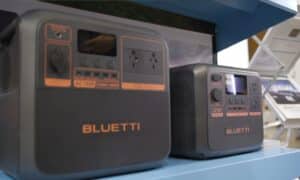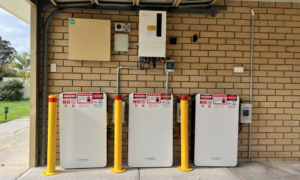Renewable energy can replace the Liddell coal-fired power station, according to the Australian Wind Alliance (AWA).
The claim comes as the Turnbull Government tries to persuade energy company AGL to keep the ageing Liddell power station open.
This is despite AGL’s reluctance to keep the 50-year-old NSW plant in operation beyond 2022.
However, AWA coordinator Andrew Bray says renewables can fill the energy vacuum that Liddell’s closure will create.
Wind & solar could supply 3,600 MW in NSW
Mr Bray said 3,600 MW of new wind and solar farms are ready to play their part. Consequently, they could easily replace the 1,680 MW capacity of the Liddell station when it closes in 2022.
“Cheap renewables combined with modern solutions like batteries and demand management will keep the system reliable and lower power bills,” he said.
“New wind and solar farms will be spread across the state and generate power at different times so their output is highly predictable and dependable. Speedy, one to two-year construction periods mean these projects can be up and running by 2022.”

Mr Bray cited figures compiled with assistance from the Nature Conservation Council NSW. They show five wind farms and five solar farms under construction in NSW, totalling 1,077 MW.
In addition, 11 wind farms and 17 solar farms are already approved with a capacity of 2,677 MW. Combined, these exceed Liddell’s current contribution.
Renewables and smart technology = reliability
One argument against renewable energy sources is they do not supply reliability in terms of demand response or ‘frequency control’.
This is the ability to supply more power instantly when demand increases in order to maintain a steady 50 Hz electricity supply. Coal and gas-fired stations are good at doing this.
However, Mr Bray told Energy Matters the problem can be solved with new and emerging technologies.
Batteries, synthetic inertia for frequency control in renewables
These include solar battery storage and also, in the case of wind farms, ‘synthetic inertia’ that mimics power plant turbines.
“For instance, in Quebec they require wind farms to use synthetic inertia and also in Texas, I believe,” Mr Bray said.
“In Australia, AEMO [the Australian Energy Market Operator] has got wind of this. They are having a trial at the Hornsdale Wind Farm in South Australia in the next month or so.
“This will test the ability of that wind farm to generate synthetic inertia and supply that frequency control.”
Mr Bray added that the biggest threat of blackouts comes from the inability of government to deliver a policy that supports the transition to clean energy that is already happening.
“You can’t fix engineering problems with politics,” he concluded.












































